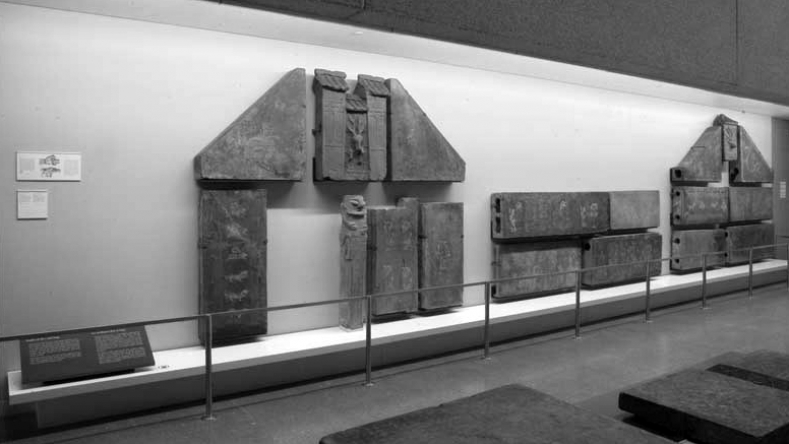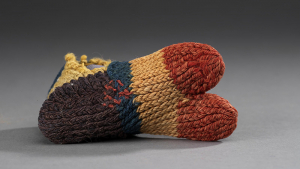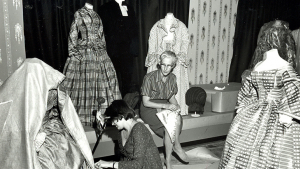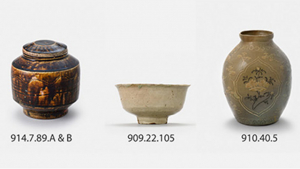During the Han Dynasty, stone and brick tombs of the wealthy were subterranean residences adorned with decorated walls and furnished with everything the occupant might need in the hereafter. At the south end of the ROM Gallery of Chinese Architecture lie two reconstructions of Han Dynasty tombs (206 BC – AD 220). The carved pictorial stone tomb belonged to a Han officer named Zuo Biao (150 AD) and was studied by Klaas Ruitenbeek; the other represents a hollow-brick tomb.
Tomb chambers of hollow bricks were common and resembled small houses with gabled end walls and sloping ceilings. The doors were also made of ceramic. A wooden coffin and gifts were placed in the tomb chamber.
There are nearly 100 pieces of tomb bricks in the ROM’s collections; most were collected by Bishop White in the 1930s at Luoyang, the capital of the Eastern Han Dynasty. The Mangshan mountain at the northern side of the city was an ideal place for noble families to bury their loved ones. Thousands of tombs were found there, constructed with hollow bricks, some of them multi-chambered.
The families commissioned the manufacture of the bricks, which were mould-made. Decorative patterns were usually stamped onto the bricks and coloured. Common patterns served as templates and included human figures, trees, birds, horses and other animals. The commissioned bricks were transported to the burial locations for assembly. Different-shaped bricks were needed to construct a chambered-tomb and to fit in various positions, such as doors, columns, gables, ceilings, base stones, etc.
The ROM’s collection includes most types of hollow bricks, but we do not have the remains of a complete tomb. Given the representative nature of the collection, we can assemble our bricks from different tombs to form the real-size chamber-tomb, on display in the gallery.
The wall-mounted and flat arrangement shows the chamber’s entrance with a door opening, within which appears a central column; this traditional feature is also seen in the Zuo Biao tomb. The side wall of the chamber usually consists of four horizontal bricks, which align with the four horizontal bricks on the back wall.
These bricks compare favourably to the best objects found in archaeological collections in China; local museums in Luoyang do not possess some of the ROM’s examples.





